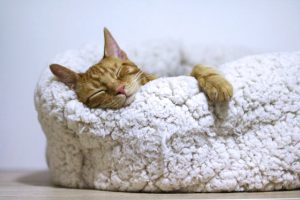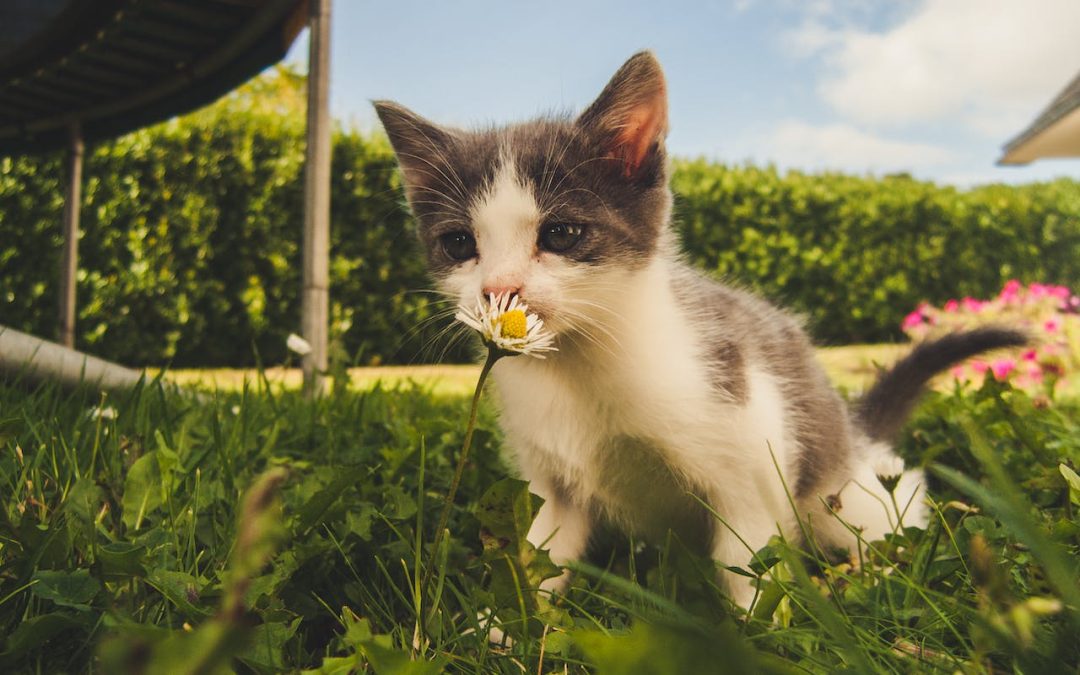Designing Cat-Friendly Zones in Your Home
Welcoming a feline companion into your new home means creating special spaces that cater to their unique needs. Establishing cat-friendly zones is key to ensuring they feel safe, comfortable, and entertained. As you plan your new living space, consider integrating areas where your furry friends can climb, play, and relax. Each nook holds the potential for a delightful cat retreat. That enriches their lives and strengthens the bond between you and your pet. Our guide aims to help you design these zones, ensuring they blend harmoniously with your home’s aesthetics while keeping your cat’s happiness and well-being at the forefront.
Understanding Your Cat’s Needs

Cats prefer safe, comfortable settings in which to explore and play.
Creating a home that meets your feline friend’s needs is essential for their well-being. Cats crave safe, comfortable environments where they can explore and play. They need spaces that cater to their instinctual behaviors, like climbing, scratching, and hiding. Integrating elements such as elevated perches and secluded nooks can satisfy these urges.
Equally important is ensuring that these areas offer tranquility and security, allowing cats to retreat when they feel overwhelmed or need rest. Recognizing these aspects of cat behavior helps in designing a home that’s not just pet-friendly but specifically tailored to the unique needs of cats. This thoughtful approach enhances their quality of life and strengthens the bond between pets and their owners. So, taking the time to understand and cater to these feline preferences is rewarding for any cat owner.
Key Elements of a Cat-Friendly Home
Creating cat-friendly zones in a new home revolves around understanding and catering to feline instincts. First, prioritize vertical space. Cats naturally seek high perches to survey their domain, feeling secure and in control. Install shelves, cat trees, or wall-mounted perches to satisfy this need. Second, ensure these spaces include scratching posts. Cats scratch to mark territory, stretch muscles, and maintain claw health. Integrating scratching surfaces in these zones prevents damage to furniture. Third, consider introducing pets to your new home with cozy hideaways. Cats value privacy for rest and retreat. Incorporate comfortable beds or enclosed spaces where they can escape and relax.
Next, focus on stimulation. Interactive toys and puzzle feeders keep your feline friends mentally and physically engaged. Also, if possible, provide a safe outdoor access point. A securely enclosed patio or a window with a view can offer endless entertainment. Lastly, remember to include easy-to-clean surfaces. Cats are clean animals, and maintaining hygiene in these zones is crucial for their health and happiness. With these key elements, your new home will become a delightful sanctuary for your beloved companions
Choosing the Right Locations

Interactive toys in cat-friendly areas keep your feline companions cognitively and physically active
Selecting ideal spots for your feline friends involves balancing their needs with your living space. Firstly, consider quiet areas where your cat can retreat and feel secure. Avoid high-traffic zones to ensure they have a peaceful sanctuary. Secondly, identify sunny spots. Cats adore basking in warm sunlight, so a perch near a window would be perfect.
Also, consider their litter box location; it should be accessible yet discreet, away from their eating area. Equally important, ensure these locations are safe. Remove any potentially harmful objects and ensure windows have secure screens. Lastly, integrate their zones into areas where you spend time. Cats enjoy being near their humans, so a cozy nook in your living room can be ideal. This way, you can enjoy each other’s company while respecting their need for independence.
DIY Projects for Cat Zones

Inspect all cat furniture and toys for signs of wear and tear and replace them as needed.
Embarking on DIY projects for your cat friend can transform your home into a paradise for your feline friends. First, consider a simple window perch. Cats love to gaze outside, so attach a sturdy shelf near a window. Line it with a soft cushion for extra comfort. Next, explore homemade toys. For instance, create a puzzle feeder using a small box with holes. It stimulates their minds and satisfies their hunting instincts. Another idea is a personalized cat bed. Use an old sweater to craft a cozy sleeping spot. Cats adore the familiar scent, making it an instant hit.
For adventurous felines, build a climbing wall. Install shelves at various heights, ensuring they are secure. This setup encourages exercise and satisfies their climbing urges. Lastly, consider a dedicated grooming station. Equip it with brushes and combs for regular grooming sessions. That keeps them well-groomed and strengthens your bond.
Incorporating Aesthetics and Design
Creating a cat-friendly home doesn’t mean sacrificing style. Cleverly integrating feline features into your decor can elevate your space’s look. For instance, choose scratching posts and cat trees that complement your room’s color scheme. Wall-mounted shelves offer your furry friends a lofty perch while adding a modern touch to the room. Opt for cozy hideaways that double as chic furniture pieces. Even litter boxes now come in designs that blend seamlessly with your home’s aesthetic. Remember, the key lies in selecting items that serve your pet’s needs and your taste for elegance. This approach ensures your home remains both pet-friendly and stylish.
Maintenance and Safety Considerations
These designated areas in your home necessitate regular maintenance and a focus on safety. Firstly, inspect these areas frequently for any loose objects or small parts that could pose choking hazards. Equally important is the cleanliness of these spaces; routinely cleaning them prevents the buildup of cat hair and dander, contributing to a healthier environment. In addition, check all cat furniture and toys for signs of wear and tear, replacing them as needed to avoid injuries. For cats with outdoor access, you must install secure fencing or netting to keep them safe. Remember, a well-maintained and safe cat zone keeps your pets happy and ensures a harmonious coexistence in your home.
Final Thoughts on Designing Cat-Friendly Zones
Creating cat-friendly zones in your new home brings joy and comfort to your feline friends and adds a touch of whimsy to your living space. Embracing these areas allows your pets to thrive, offering them safe havens and stimulating environments. Remember, the key lies in balancing aesthetics with functionality, ensuring these zones blend seamlessly with your home’s overall design. Each corner dedicated to your cats reflects your care and understanding of their needs. As you embark on this rewarding endeavor, cherish the bond it fosters with your beloved pets. Here’s to happy, contented cats and a harmonious home!




